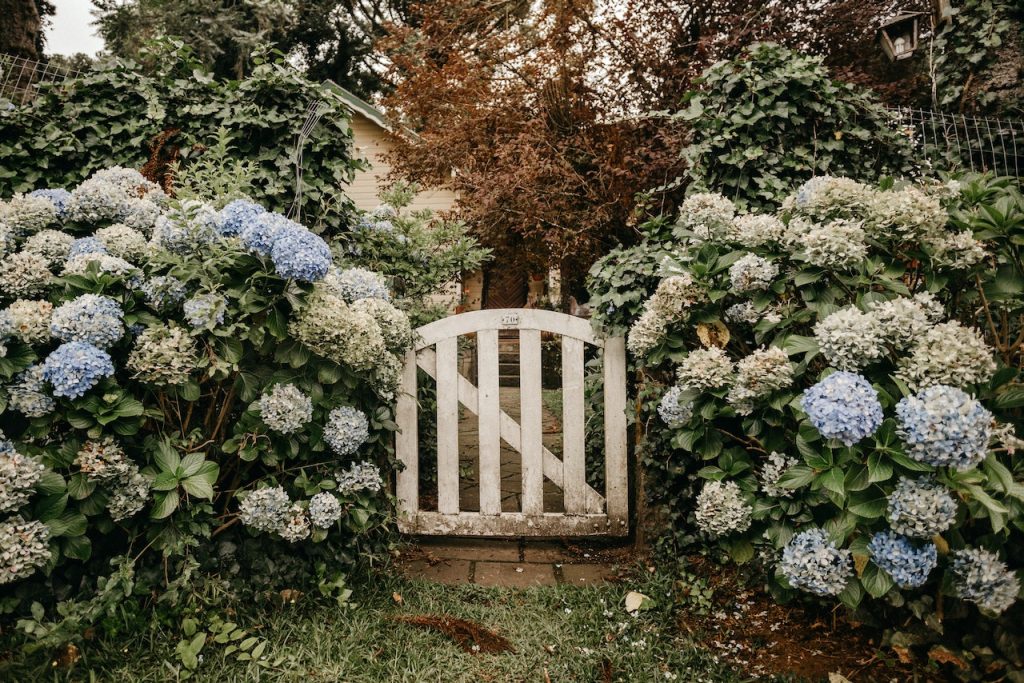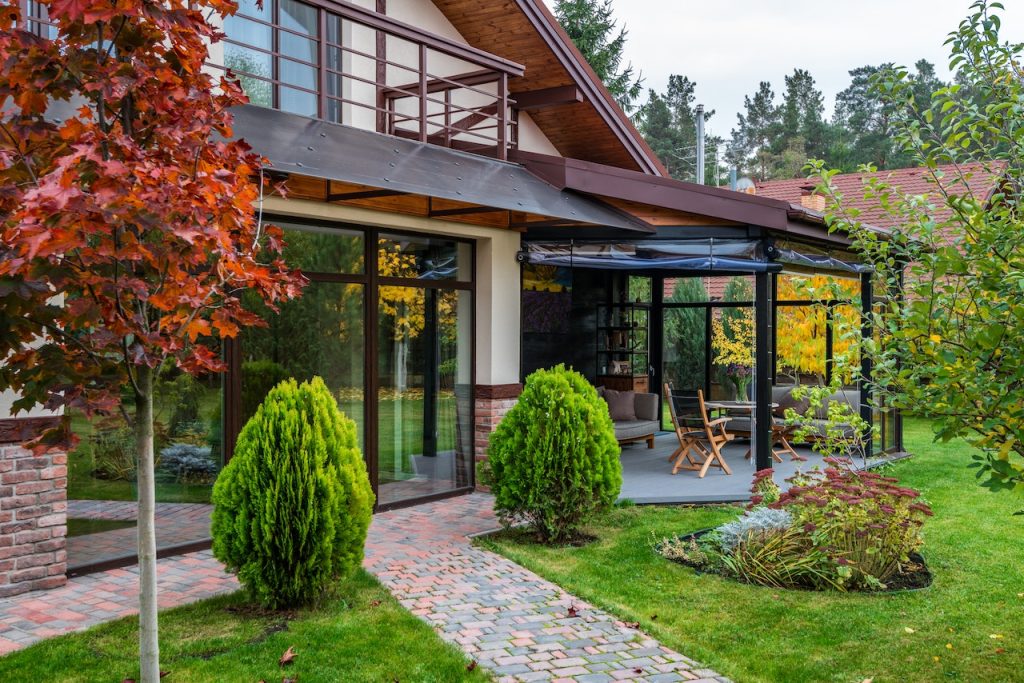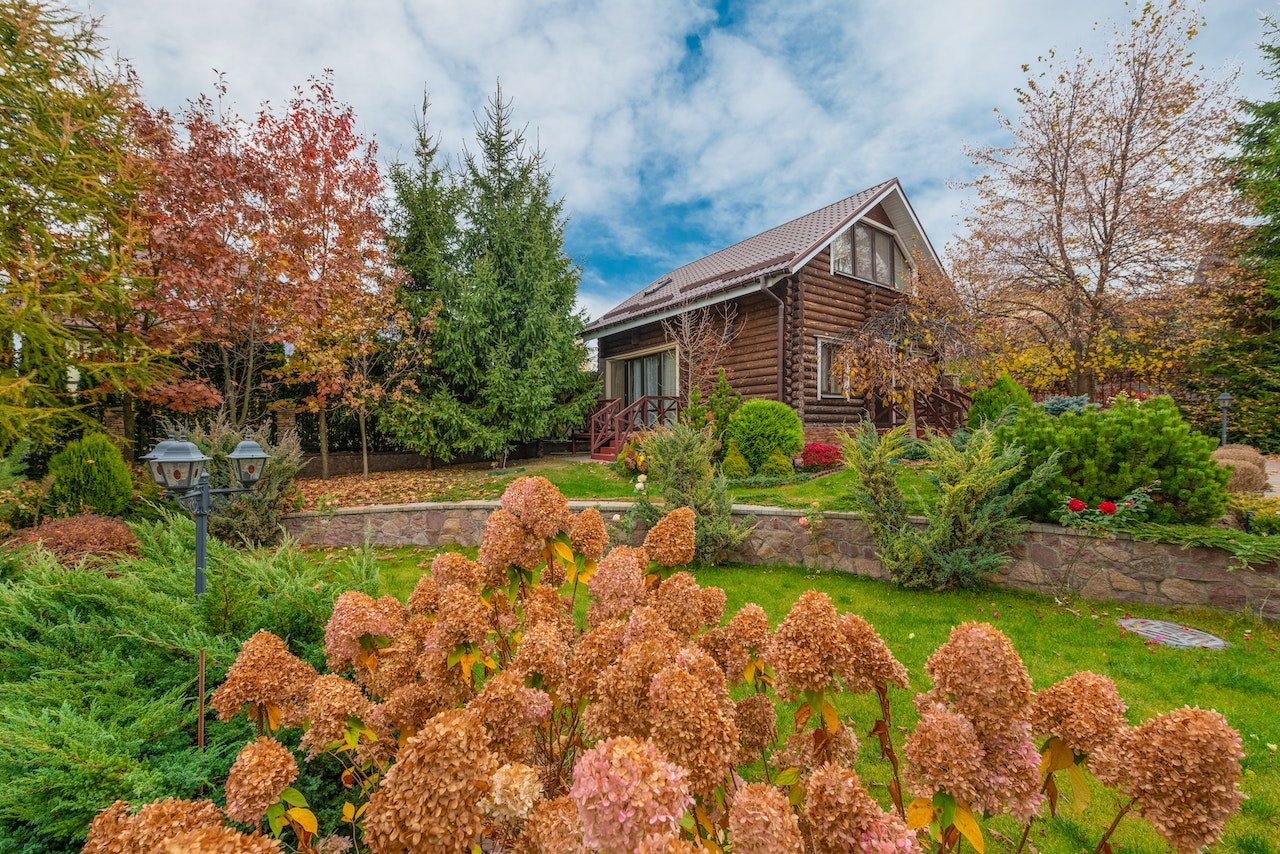Cottage gardens have an enduring charm that has been capturing the imagination of gardeners and homeowners for generations. With their delightful mix of bursting blooms, lush foliage, and fascinating nooks and crannies, these gardens offer a soothing retreat from the hustle and bustle of modern life.
If you’ve ever dreamed of creating your own little corner of paradise, our cottage garden ideas can help you transform your outdoor space into a haven of beauty, serenity, and enchantment. In the following article, we explore a variety of cottage garden ideas that cater to different tastes, budgets, and space constraints.
From designing your garden layout to selecting the perfect plants, we’ll guide you through every step of the process, ensuring that you have all the tools and inspiration needed to create your very own idyllic retreat.
Read on to discover the enchanting world of cottage gardening and unlock the secrets to creating a magical, thriving outdoor space.
What Is a Cottage Garden?
A cottage garden is a distinct style of landscaping and gardening that originated in the English countryside. It is characterized by its informal, romantic, and whimsical charm. This type of garden typically features a dense and diverse mix of flowering plants, herbs, vegetables, and fruit trees, all intermingled in a seemingly haphazard yet harmonious arrangement.
Cottage gardens are designed to evoke a sense of nostalgia and serenity as they celebrate nature’s bounty and provide a visually appealing and functional outdoor space.
The essence of a cottage garden lies in its seemingly random yet charmingly organized appearance. It is a harmonious blend of practicality and aesthetics that creates an ecosystem that not only nurtures the senses but also provides sustenance.
In contrast to more formal or minimalist garden designs, cottage gardens embrace an abundance of colors, textures, and fragrances, with an emphasis on organic growth and a relaxed approach to planting.
Key elements often include meandering pathways, rustic structures such as arbors or trellises, and the use of traditional materials like stone or wood. The result is a vibrant and enchanting garden that offers both beauty and practical utility for its inhabitants.
Although rooted in tradition, cottage gardens can be adapted to suit various climates, regions, and individual preferences, making them a versatile and timeless choice for gardeners seeking to create an inviting and nurturing outdoor retreat.
The Art of Cottage Garden Design
Creating a captivating cottage garden begins with thoughtful design. You can kick-start the process of designing your cottage garden by assessing the size, shape, and natural features of your outdoor space, such as slopes, sun exposure, and soil type. Use these elements to ensure that your garden blends harmoniously with its surroundings.
It’s also a good idea to sketch out a rough plan of your desired layout, incorporating meandering paths, secluded seating areas, and eye-catching focal points such as ponds or sculptures. Remember to strike a balance between open spaces for relaxation and more densely planted areas for visual interest. By blending aesthetics and functionality in your design, you can create a truly enchanting cottage garden experience.
Remember that you don’t have to tackle the design stage yourself. You can always hire an experienced landscape designer to do it for you, use free garden planning software, or draw inspiration from platforms such as Pinterest or Instagram.
How to Elevate Your Cottage Garden
In addition to the essential aspects of cottage garden design outlined above, consider incorporating the following elements:
- Layering. To create a sense of depth and richness in your garden, layer plants by positioning taller varieties at the back and gradually working towards shorter species at the front. This approach allows each plant to be appreciated individually while also contributing to a lush, cohesive look.
- Curves and flow. Rather than opting for straight lines and rigid shapes, embrace curves and organic forms in your garden design. You can achieve this through winding pathways, irregularly shaped flower beds, or even the placement of rocks and boulders. These natural elements will contribute to the relaxed, inviting atmosphere that is characteristic to cottage gardens.
- Blurring boundaries. Soften the edges of your garden by allowing plants to spill over onto paths or surrounding areas. This technique helps create a sense of abundance and further enhances the garden’s connection with its environment.
- Focal points. Introduce one or more focal points within your garden to draw the eye and provide visual interest. These can include water features, statuary, or even ornamental trees or shrubs. Thoughtfully placed focal points can serve as anchors for your design and offer opportunities for creative plantings around them.
- Repetition. By repeating certain plant varieties or color schemes throughout your garden, you can create a sense of unity. This harmonious effect will make your cottage garden feel more balanced and thoughtfully designed.
- Wildlife-friendly features. Encourage birds, bees, and butterflies to visit your garden by providing shelter, nesting sites, and food sources such as nectar-rich flowers or bird feeders. Not only will these visitors add life and movement to your outdoor space, but they will also play an essential role in pollination and pest control.
Essential Elements of a Cottage Garden
The magic of a cottage garden lies in its rich tapestry of colors, textures, and fragrances. To achieve this, incorporate a diverse selection of plants, including flowering perennials, annuals, bulbs, shrubs, and climbers. Choose plants with varying heights and bloom times to ensure year-round interest.
A well-designed cottage garden also embraces elements of structure and architecture. You can do this with the help of trellises, arches, pergolas, or fences draped in climbing plants. Additionally, consider incorporating decorative elements such as bird baths, sundials, or vintage gardening tools to add character and charm.
You can also choose elements such as water features to introduce a sense of tranquility and movement to your garden. This could take the form of a pond, fountain, or even a small stream. The soothing sound of flowing water can create a calming ambiance while also attracting wildlife like birds and frogs.
Another idea is to encourage relaxation and contemplation within your garden by designing one or more secluded seating areas. Whether nestled among the plants or situated in a quiet corner, these spaces provide an opportunity for visitors to pause and fully appreciate their surroundings.
Some gardening enthusiasts also choose to personalize their cottage gardens with unique artistic elements that reflect their personal style and taste. These can include hand-painted signs, whimsical sculptures, or even repurposed items, such as an old bike used as a plant stand.
Rather than using rigid borders or edging materials, you can opt for a more natural approach by allowing plants to gently spill over onto paths or neighboring beds. This kind of informal edging softens the garden’s appearance and contributes to its romantic, carefree charm.
Last but not least, consider enhancing the magical atmosphere of your cottage garden by incorporating subtle outdoor lighting. Solar-powered lanterns, string lights, or strategically placed spotlights can highlight focal points and create a warm glow during evening hours.
With the help of these elements in your cottage garden, you can create a truly captivating space that delights the senses and invites exploration. Embrace the spirit of cottage gardening by weaving together these diverse components into a harmonious, enchanting outdoor retreat.
Choosing the Perfect Cottage Garden Plants
Selecting the ideal plants for your cottage garden is crucial for creating the desired atmosphere. Begin by choosing plants that thrive in your climate and soil conditions. Don’t shy away from mixing plant types – combine roses with lavender or peonies with ornamental grasses for a truly enchanting display.

Opt for heirloom varieties or native species to evoke a sense of nostalgia and authenticity. Consider fragrant plants such as lilacs or honeysuckle to create a sensory experience for anyone that visits your garden. Finally, choose a harmonious color palette that compliments your home’s exterior and surrounding landscape.
To further refine your plant selection for a captivating cottage garden, consider these recommendations:
Succession Planting
Arrange your plants to ensure that there is a continuous display of color throughout the growing season. This can be an easy goal to achieve if you select species with staggered bloom times or by combining early, mid, and late-season bloomers in your planting plan.
Texture and Foliage
While flowers are undoubtedly the stars of the show in a cottage garden, don’t overlook the importance of texture and foliage. Go for plants with interesting leaves, such as ferns or hostas, to add depth and variety to your garden’s appearance.
Self-Seeding Plants
Embrace the charmingly informal nature of cottage gardens by incorporating self-seeding plants like poppies, forget-me-nots, or foxgloves. These species will naturally reappear year after year, creating a dynamic and ever-evolving display.
Pollinator-Friendly Species
Attract bees, butterflies, and other beneficial insects to your garden by choosing plants rich in nectar and pollen. Some popular options include echinacea, salvia, and butterfly bush.
Drought-Tolerant Plants
For gardens located in regions with limited rainfall or water restrictions, opt for drought-tolerant species such as lavender, yarrow, or sedum. These resilient plants will contribute beauty and color to your garden while requiring minimal irrigation.
Ground Covers
Fill in gaps between taller plants with low-growing ground covers like creeping thyme or sweet woodruff. These versatile species not only add visual interest but also help suppress weeds and improve soil health.
If you consider these factors when choosing the perfect cottage garden plants, you will be able to create a stunning outdoor space that is both visually appealing and ecologically diverse. Allow yourself to be inspired by the wide array of plant options available and design a garden that truly reflects your unique sense of style and appreciation for nature’s beauty.
Incorporating Edibles into Your Cottage Garden
Cottage gardens have historically been spaces where form and function meet, so why not include edible plants in your design? Consider planting fruit trees, berry bushes, or herbs alongside ornamental plants for a lush and bountiful display. Some popular choices include apples, raspberries, mint, and thyme.

Integrating edibles into your cottage garden not only provides food for your table but also encourages pollinators and beneficial insects. This symbiotic relationship can lead to a healthier and more productive garden overall.
In addition to the popular edible plant choices mentioned, here are some more ideas and tips for seamlessly integrating edibles into your cottage garden:
Vegetables
Many vegetables can be just as visually appealing as ornamental plants. Consider adding colorful varieties, like rainbow chard, purple kale, or striped eggplants, to your garden beds. Alternatively, create a dedicated vegetable plot within your cottage garden for a more organized approach.
Herbs
Aromatic herbs not only serve as culinary ingredients but also provide delightful scents and textures in the garden. Plant herbs like rosemary, basil, oregano, or sage among your flowers to create an interesting and fragrant display.
Climbing Vines
Take advantage of vertical space by growing edible climbers such as beans, peas, or grape vines on trellises, fences, or pergolas. These productive plants will add an extra layer of richness while providing a harvest.
Espalier Fruit Trees
If space is limited or you’re seeking a more formal look, consider training fruit trees in an espalier style along a wall or fence. This technique allows you to grow fruit in confined spaces while adding an artistic element to your garden’s design.
Ornamental Edibles
Some edible plants boast stunning foliage or flowers that make them attractive additions to any garden. Options like artichokes, chives, or edible flowers such as nasturtiums and calendula can easily be integrated into your cottage garden design without sacrificing aesthetics.
Companion Planting
Maximize the benefits of including edibles in your garden by practicing companion planting – strategically placing plants that support each other’s growth and repel pests. For example, pair tomatoes with basil or plant marigolds among your vegetables to deter harmful insects.
By thoughtfully incorporating edibles into your cottage garden, you can enjoy the rewards of a beautiful, productive, and sustainable outdoor space. Embrace the dual purposes of form and function to create a garden that nourishes both the body and soul.
Crafting Enchanting Pathways and Garden Structures
A key element of cottage garden design is creating meandering pathways that encourage exploration. Use materials such as gravel, cobblestones, or brick to construct paths that weave through your garden, connecting different areas of interest.

Garden structures like arbors, pergolas, or gazebos can also enhance the charm of your cottage garden. Adorn these structures with climbing plants such as clematis, wisteria, or ivy to create whimsical walkways and secluded hideaways.
Here’s what else you can try to further elevate the enchantment of your cottage garden:
- Stepping stones. Incorporate stepping stones into your garden as an alternative or complement to paved paths. Irregularly shaped stones, wood rounds, or recycled materials like broken concrete can add a rustic, natural touch to your garden’s design.
- Garden gates. Enhance the entrance to your garden with a charming gate or archway adorned with climbing plants. This welcoming feature can set the tone for your entire outdoor space and provide a sense of anticipation as visitors enter.
- Raised beds. Create structure and visual interest by constructing raised beds for planting flowers, herbs, or vegetables. These elevated garden areas can be made from wood, stone, or even metal and help define distinct planting zones within your cottage garden.
- Green tunnels. For a truly enchanting experience, construct green tunnels using living plants trained over arches or trellises placed at intervals along a pathway. Suitable species include climbers like roses, jasmine, or grapevines.
- Garden art. Integrate unique sculptures, vintage objects, or repurposed materials into your garden’s design to create focal points and conversation starters. These artistic elements can be tucked among plants or displayed prominently near pathways to be admired by passersby.
- Seating nooks. In addition to larger structures like pergolas or gazebos, consider crafting smaller seating nooks throughout your garden. A simple bench positioned beneath a tree or in a quiet corner provides a perfect spot for visitors to pause and appreciate their surroundings.
By thoughtfully designing enchanting pathways and garden structures, you can create an immersive and magical experience within your cottage garden. Allow yourself to be inspired by the endless possibilities for crafting spaces that beckon exploration and delight the senses.
Cottage Garden Ideas for Small Spaces
Don’t worry if your space is limited – you can still create a captivating cottage garden on a smaller scale. Focus on vertical gardening by incorporating trellises, wall-mounted planters, or hanging baskets to maximize available space. Another approach is to prioritize select plants that offer multiple benefits, such as beauty, fragrance, and edibility.
Use containers to create a portable cottage garden that can be rearranged as needed. This flexibility allows you to experiment with different layouts and plant combinations without committing to a permanent design.
Miniature Varieties
Opt for dwarf or compact varieties of plants that provide the same charm as their full-sized counterparts but require less space. Examples include miniature roses, dwarf fruit trees, or small shrubs such as boxwood.
Multi-Functional Features
Choose garden elements that serve multiple purposes, such as a bench with built-in storage or a vertical garden that doubles as a privacy screen. These clever solutions can help you maximize the functionality of your limited space.
Tiered Planting
Utilize tiered planters, stacked pots, or even repurposed items like ladders, to create vertical planting opportunities in your small garden. This approach allows you to grow more plants without consuming valuable ground space.
Cohesive Color Palette
In a small space, a harmonious color scheme can create a sense of unity and make the garden feel more spacious. Choose a few complementary colors and use them consistently throughout your plant selections and decorative accents.
Corner Plantings
Make the most of every inch of your space by planting flowers, herbs, or small shrubs in unused corners or narrow spaces between structures. These plantings can add visual interest and soften hard edges in otherwise tight areas.
Balcony or Rooftop Gardens
If you lack traditional ground space for a cottage garden, consider creating an elevated oasis on a balcony or rooftop. Use lightweight containers filled with potting mix to grow flowers, herbs, and even small fruit trees in these unconventional locations.

If you implement these creative ideas for small-space cottage gardens, you’ll have a chance to transform even the most limited outdoor area into a charming and captivating retreat. Embrace the potential of your compact garden and discover the joys of cultivating beauty in unexpected places.
Seasonal Maintenance Tips for a Flourishing Cottage Garden
Maintaining a thriving cottage garden requires some effort, but the rewards are well worth it.
To keep your cottage garden flourishing throughout the year, follow these seasonal maintenance tips:
Spring
- Begin by tidying up any debris, fallen branches, or dead plant material that accumulated over the winter months.
- Prune and shape deciduous shrubs and trees before they start producing new growth.
- Fertilize your soil with compost or organic slow-release fertilizer to provide essential nutrients for your plants.
- Mulch around your plants to retain moisture, suppress weeds, and regulate soil temperature.
- Plant summer-flowering bulbs and sow seeds for annuals and vegetables.
Summer
- If possible, water your garden consistently during hot, dry periods to prevent stress on your plants. Be sure to water deeply to encourage strong root development.
- Monitor your garden for pests and diseases, addressing any issues promptly using organic or chemical treatments as needed.
- Pinch back or stake tall plants to encourage bushiness and prevent them from becoming too leggy.
- Harvest edible fruits, vegetables, and herbs regularly to promote continued production.
Fall
- Remove spent annuals and cut back perennials that have finished flowering.
- Collect seeds from your favorite plants for future planting or to share with fellow gardeners.
- Plant spring-flowering bulbs such as tulips, daffodils, and hyacinths for a stunning display in the coming year.
- Prepare any empty beds for winter by adding compost or other organic matter to improve soil fertility.
Winter
- Prune deciduous trees and shrubs while they are dormant to maintain their shape and control their size.
- Protect tender plants or potted specimens from harsh winter temperatures by moving them indoors or wrapping them in protective materials like burlap or frost cloth.
- Clean and store gardening tools, equipment, and containers so they are ready for use in the spring.
By diligently following these seasonal maintenance tips, you can ensure that your cottage garden remains healthy, productive, and beautiful throughout the year. Embrace the rhythm of the changing seasons and enjoy the satisfaction of nurturing your garden to its full potential.
How to Start a Cottage Garden on a Budget?
A dreamy cottage garden, filled with an abundance of colorful blooms, the gentle hum of bees, and the sweet aroma of nature – sounds idyllic, doesn’t it? But what if your budget is tight and you still yearn for that enchanting oasis?

Don’t worry! With a little ingenuity, creativity, and some savvy spending, you can design a budget-friendly cottage garden that will leave your neighbors green with envy.
Plan Your Garden Wisely
The secret to success starts with careful planning. Sketch out your garden space and decide which areas you’d like to focus on. Consider factors such as sunlight exposure, soil type, and drainage before choosing your plants. By doing this, you’ll avoid costly mistakes and ensure your cottage garden thrives from the get-go.
Select Budget-Friendly Plants
Opt for low-maintenance plants that are easy to grow and propagate. Perennials like lavender, daisies, and cone-flowers not only look beautiful but can also be divided and spread throughout your garden over time. Additionally, self-seeding plants such as foxgloves or cosmos will save you money as they naturally fill in empty spaces without any extra effort.
Shop Smart
Visit local nurseries during sales or end-of-season clearances to snag discounted plants. Don’t shy away from “less-than-perfect” specimens; with a little TLC, they can bounce back and become stunning additions to your garden. And don’t forget about seed swaps! Connect with other gardening enthusiasts in your community or online to exchange seeds and try new varieties without breaking the bank.
Go DIY
Embrace your inner artist and create charming, budget-friendly garden decorations from repurposed items. Upcycle old furniture, pallets, or containers to create unique planters, trellises, or seating areas. Transform a simple wooden ladder into a vertical garden adorned with potted plants, or turn an antique wheelbarrow into a whimsical flower-filled centerpiece.
Be Water-Wise
Conserve water and save money by incorporating drought-tolerant plants into your garden design. Additionally, consider installing a rain barrel to collect rainwater for watering your plants. This eco-friendly solution not only benefits your wallet but also helps the environment.
Enlist Help From Friends and Family
Creating a cottage garden can be a labor of love, but it doesn’t have to be a solo endeavor! Enlist the help of friends or family members who share your passion for gardening. Exchange ideas, divide labor, and enjoy camaraderie as you work together to bring your dream garden to life.
Final Thoughts
Creating your own cottage garden is an opportunity to express your creativity and connect with nature. By carefully considering design principles, plant selection, and seasonal maintenance needs, you can cultivate a magical outdoor sanctuary that offers beauty, serenity, and enchantment for years to come.
Even if you don’t have a lot of money to spend, designing a stunning cottage garden on a budget is entirely achievable with some resourcefulness and creativity. With careful planning, smart shopping, and a touch of DIY magic, you’ll soon be basking in the beauty of your very own charming oasis without emptying your pockets.
Embrace the joys of working close to nature and allow yourself to be swept away by its timeless charm. Happy gardening!
Was it helpful?

Enamored with the world of golf Jack pursued a degree in Golf Course Management at THE Ohio State University. This career path allowed him to work on some of the highest profile golf courses in the country! Due to the pandemic, Jack began Inside The Yard as a side hustle that quickly became his main hustle. Since starting the company, Jack has relocated to a homestead in Central Arkansas where he and his wife raise cattle and two little girls.






